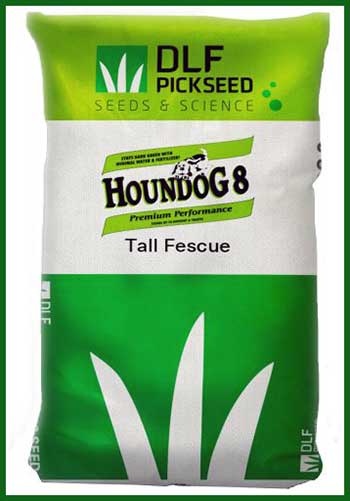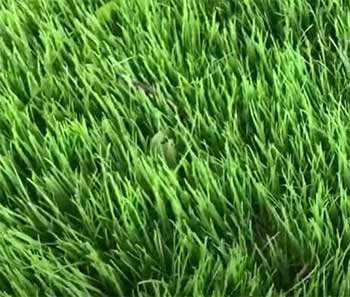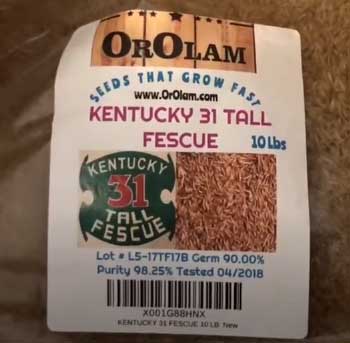Grasses go beyond grandma’s (or your neighbor’s) lawn. They are used in stadiums and turfs too. If you’re a sports fan you know what we mean.
Houndog 8 or Kentucky 31? This has been a debate for the longest time when it comes to turf grasses. So which one should you choose?
Here is a comparison for you to make the decision easier.
A Quick Summary
If you’re one of the “always-on-the-go” persons, this part is for you. If you want to know the gist of it all minus the fluff, this table notes them down for you. Feel free to go through it for a quick summary.
| Feature | Houndog 8 | Kentucky 31 |
| Season | Cool | Cool |
| Heat tolerance | Good | Better |
| Color | Dark Green | Light Green |
| Texture and appearance | Fine, thin | Coarse, thick |
| Germination time | 7-14/10-15 days | 7-14 days |
| Brown patch resistance | Yes | No |
Now for the less busy people, let’s get into the details.
Houndog 8 And Kentucky 31: Key Differences
Whether you want them for your lawn or for turf, you can’t decide what you should pick unless you know about them. The same goes for this debate.
Before you take your pick, you should know what both of them have to offer and what you’re getting into.
Here are some key differences between Hound Dog 8 and Kentucky 31 to make things easier for you.
- Season
No, this isn’t about the weather. Season indicates the best time a grass blend will grow. Another thing it will tell you is the preferred temperature for your grass.

Cool season grasses grow better in lower temperatures, and warm season grasses grow better in slightly higher temperatures.
Cool season grasses are more durable and adapt better to different environments.
They’re versatile and can be used for both precision planting and heavy traffic planting.
They grow best in places with cooler summers and colder winters. The optimum growing temperature for them is 65-75 degrees Fahrenheit.
Warm season grasses are the opposite. They are less adaptive and versatile.
Warm season grasses grow better in warmer places where the summer is on the strong side and the winter season is comparatively warm. The optimum temperature for them is 85-90 degrees Fahrenheit.
Hound Dog 8 and Kentucky 31- both are cool-season grasses. They thrive in lower temperature places that aren’t very strong, and the optimum temperature for their growth is 65-75 degrees Fahrenheit.
- Heat Tolerance
Both Hound Dog 8 and Kentucky 31 are excellent in heat resistance. Hound Dog 8 has a strong heat tolerance, but Kentucky 31 still takes the crown in this department.
Heat tolerance means how good the grass is at surviving the heat. Warm season grasses are generally better at this because they thrive in warm environments. Cool season grasses are usually a little behind, but tall fescue grasses are pretty amazing in this too.
Tall fescue grasses are known for being durable and easily adapting to difficult situations for growth. They are good at tolerating the heat. Hound Dog 8 is a tall fescue grass so it comes with excellent heat tolerance.
But Kentucky 31 still has a little edge over them. It has more heat tolerance than most of the tall fescue grasses. So Hound Dog 8’s heat tolerance may be good, but Kentucky 31’s tolerance is better.
- Color
Hound Dog 8 has a darker appearance and Kentucky 31 is known for its light green color. The green also lasts longer in Hound Dog 8.
Hound Dog 8 grows up to be a nice dark green color. This is why they’re used in professional sports pitches pretty frequently.
Kentucky 31 on the other hand is a light green color. This is pretty much a signature color and it is mostly used for more open sports pitches (think golf).
- Texture and Appearances

Hound Dog 8 is a fine texture grass. The blades are thinner and therefore less rough.
Kentucky 31 is more coarse and thick, so the texture is a little rougher.
Tall fescue grasses usually appear as the thinner ones. The blades feel light and thin.
This makes the grasses feel softer no matter how dense the crown is.
Since Hound Dog 8 is a tall fescue grass, it has fine and thin blades. This makes it feel softer.
Kentucky 31 grass is pretty much the opposite of that. The blades feel heavier than the other ones and are thicker too. This gives it a more coarse texture so they feel rougher than the Hound Dog 8 grass.
- Germination Time
Germination time is how fast you’re going to see the grasses cover your target area. Both grass variants take similar time but Hound Dog 8’s germination time is a little confusing.
Germination is the process of plants starting to come out of the seed. This is usually similar for the same species of plants, the difference is very small.
The same goes for the two grass variants in question, except there is a small confusion here.
Kentucky 31 takes 7-14 days to germinate. This is normal and within range for grass seeds. Hound Dog 8’s germination time is a little unclear, one of the official manuals says it is 7-14 days and another one says 10-15 days.
- Brown Patch Resistance

Brown patches are a common problem in turf grasses. Kentucky 31 tends to start browning after a while.
Hound Dog 8 has a little edge in this department, they are brown patch resistant.
Brown patches usually show up during season changes. When the weather starts cooling off, the grasses are more vulnerable to the brown patch-causing bacteria.
Kentucky 31 is one of the more vulnerable grass variants. But Hound dog 8 is modified to resist the patch-causing bacteria.
Which One Should You Choose?
If you’re looking for a more durable variant that will germinate quickly then you should go for the Kentucky 31 grass unless you have a problem with the texture.
If you specify a darker-colored grass and have no problem knowing the germination can take slightly longer than other variants, go for Hound Dog 8.
Frequently Asked Question (FAQs)
If you take user experience into consideration then yes. Hound Dog 8 is one of the best grass seeds around and a lot of people only plant Hound Dog because of how good it is.
Kentucky 31 is one of the earlier cool season grass variants. Both variants are pretty level but Kentucky 31 has increased resistance (drought and heat) than tall fescue grass.
If you like low-maintenance but coarse grasses, then yes. They are one of the best choices for your yard.
Hound Dog grass seed is a fine-leaf, thin tall fescue grass variant. It is a cool season grass and has high tillering.
Conclusion
Hound Dog 8 vs. Kentucky 31 has been a debate for a pretty long time. Both of them are good choices so the final pick comes down to you and your personal preferences.

Kentucky 31 is too corse. To be dark green it takes a lot of fertilizer. Hounddog is dark green and soft and no brown spots. Use soybean meal on your grass!!